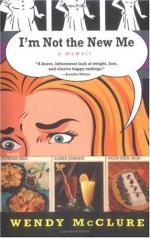After a painting in the collection of the State Historical Society of Wisconsin, and here reproduced through the courtesy of the secretary, Mr. Reuben G. Thwaites. The chief of an Indian village on the Rock River, White Cloud was half Winnebago, half Sac. He was false and crafty, and it was largely his counsels which induced Black Hawk to recross the Mississippi in 1832. He was captured with Black Hawk, was a prisoner at both Jefferson Barracks and Fortress Monroe, and made the tour of the Atlantic cities with his friends. The above portrait was made at Fortress Monroe by R.M. Sully. Catlin also painted White Cloud at Jefferson Barracks in 1832. He describes him as about forty years old at that time, “nearly six feet high, stout and athletic.” He said he let his hair grow out to please the whites. Catlin’s picture shows him with a very heavy head of hair. The prophet, after his return from the East, remained among his people until his death in 1840 or 1841.]
[Illustration: Black hawk.
From a photograph made for this Magazine.
After an improved replica of the original portrait painted by R.M. Sully at Fortress Monroe in 1833, and now in the museum of the State Historical Society of Wisconsin, at Madison. It is reproduced through the courtesy of the secretary of the society, Mr. Reuben G. Thwaites.]
[Illustration: Lincoln in 1860
From a photograph loaned by H.W. Fay of DeKalb, Illinois. After Lincoln’s nomination for the presidency, Alex Hesler of Chicago published a portrait he had made of Lincoln in 1857. (See McCLURE’S magazine for December, p. 13.) At the same time he put out a portrait of Douglas. The contrast was so great between the two, and in the opinion of the politicians so much in Douglas’s favor, that they told Hesler he must suppress Lincoln’s picture; accordingly the photographer wrote to Springfield requesting Lincoln to call and sit again. Lincoln replied that his friends had decided that he remain in Springfield during the canvass, but that if Hesler would come to Springfield he would be “dressed up” and give him all the time he wanted. Hesler went to Springfield and made at least four negatives, three of which are supposed to have been destroyed in the Chicago fire. The fourth is owned by Mr. George Ayers of Philadelphia. The above photograph is a print from one of the lost negatives.]
The audacity of a young man in his position presenting himself as a candidate for the legislature is fully equalled by the humility of the closing paragraphs of his announcement:




